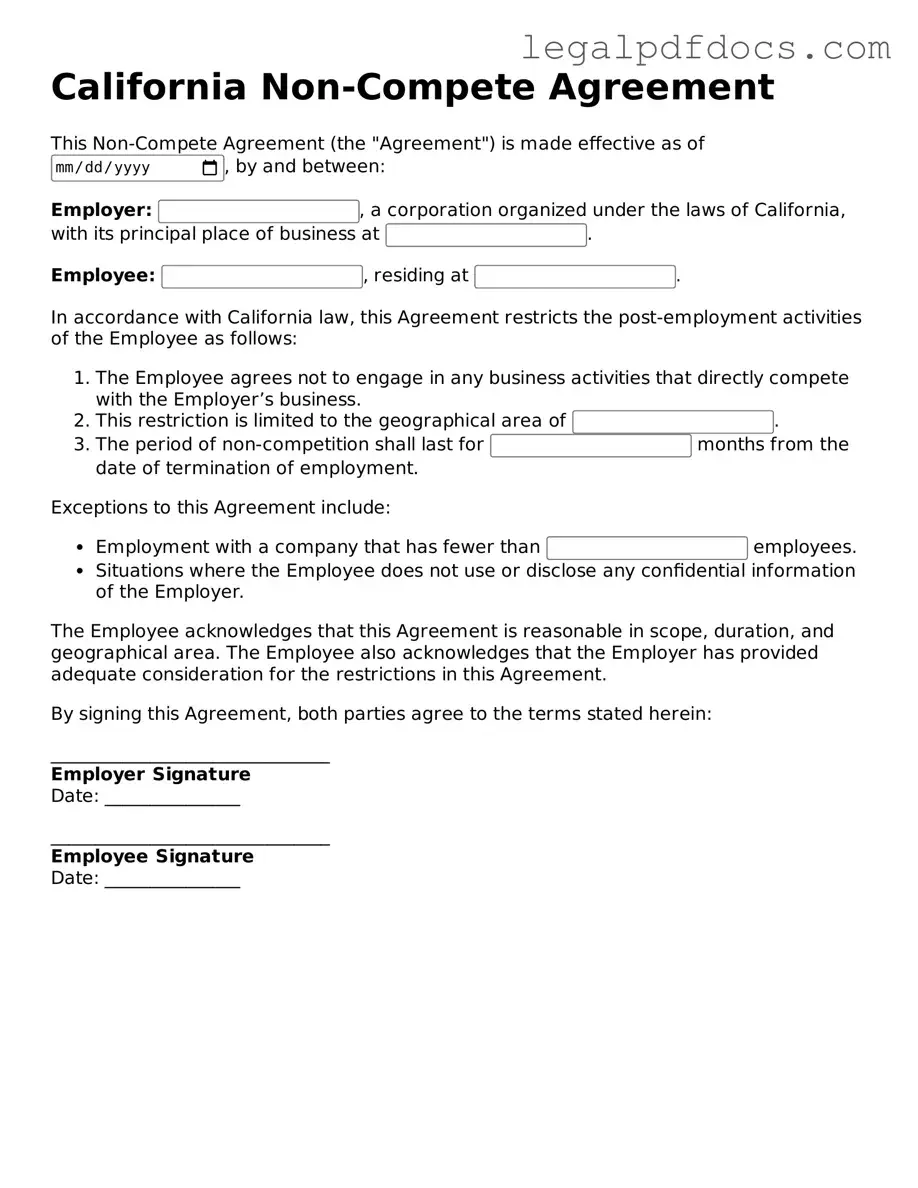In California, the landscape of employment agreements is unique, especially when it comes to non-compete agreements. These documents are designed to protect businesses from unfair competition by limiting an employee's ability to work for competitors after leaving a job. However, the enforceability of such agreements in California is quite limited. The state generally prohibits non-compete clauses, making them unenforceable except in specific circumstances, such as the sale of a business. This means that while a non-compete agreement may outline restrictions on an employee's future employment, its validity can often be challenged in court. Employers must carefully consider the wording of these agreements to ensure compliance with California law. Meanwhile, employees should be aware of their rights and the implications of signing such agreements. Understanding the nuances of the California Non-compete Agreement form is essential for both parties, as it can impact career mobility and business operations significantly.
